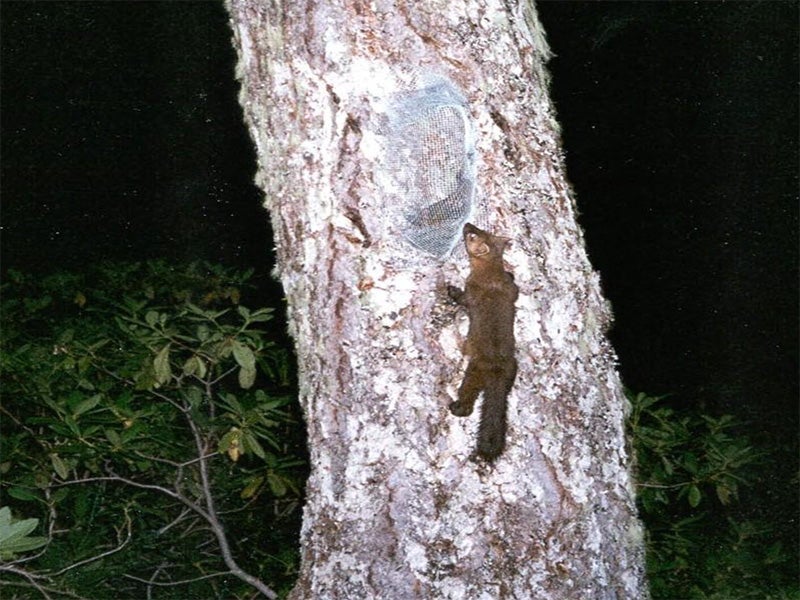Humboldt Martens Proposed for Endangered Species Act Protection
Despite 93 percent decline in California, Oregon, loophole allows industrial logging in habitat
Contact
The U.S. Fish and Wildlife Service today proposed Endangered Species Act protection for Humboldt martens as “threatened” in response to a petition and litigation from conservationists.
But a special “4(d) rule” attached to today’s listing proposal largely exempts logging activities, a primary threat to martens, from being addressed to protect the species. The proposal also does not protect critical habitat for the martens due to the perceived economic impact that protecting their habitat could have on the timber industry.
Relatives of minks and otters that dwells in mature forests, fewer than 400 Humboldt martens survive in California and Oregon in four isolated populations in a narrow band of coastal habitat. The animals have been wiped out from 93 percent of their historic range by logging and trapping.
“I love Humboldt martens and am so relieved they’re finally being proposed for Endangered Species Act protection,” said Tierra Curry, a senior scientist at the Center for Biological Diversity. “But it’s deeply troubling that the agency charged with safeguarding them isn’t protecting them from the habitat loss that’s pushing them toward extinction.”
The Center for Biological Diversity and the Environmental Protection Information Center petitioned for federal protection for the Humboldt marten in 2010, but the agency issued a negative decision in 2015. In 2016 the groups challenged the decision, and a federal judge then ordered the agency to reevaluate their status leading to today’s proposal.
“Today we celebrate the proposal to list the Humboldt marten but also urge the agency not to finalize any loopholes that would allow industrial logging to continue to destroy their habitat,” said Tom Wheeler, executive director of the Environmental Protection Information Center.
Martens are threatened by ongoing logging of mature forests, loss of closed-canopy habitat to wildfires, rodent poison used in marijuana cultivation and vehicle mortalities. California banned trapping of Humboldt martens in the 1940s, but Oregon is still developing trapping restrictions. Today’s proposal would enact federal rules making trapping in Oregon illegal.
“The Fish and Wildlife says it’s going to protect martens from extinction, but it’s not going to do anything about industrial logging of their habitat,” said Greg Loarie, the Earthjustice attorney who represented the petitioners in both the marten and fisher lawsuits. “That’s like saying that you’re going to sober up while continuing to drink — it’s just not going to work.”
Humboldt martens were once common in the coastal mountains from Sonoma County north to the Columbia River in Oregon. The animal is now so rare it was considered extinct until it was rediscovered in the redwoods in 1996. In California martens are found in Del Norte, Humboldt and Siskiyou counties. In Oregon they survive only on the Siuslaw and Siskiyou national forests.
Martens, typically 2 feet long, have large, triangular ears and a long tail. They eat small mammals, birds, berries, reptiles and insects, and are eaten by larger mammals and raptors. Martens must eat 15 to 25 percent of their body weight daily to keep up with their high metabolism.
Martens are a close relative of fishers and face the same threats. In September a judge in U.S. District Court for the Northern District of California ordered the Service to reconsider its 2016 denial of protection for Pacific fishers found in some of the same habitats in southern Oregon and Northern California as martens.
Photos are available for media use.

Additional Resources
About Earthjustice
Earthjustice is the premier nonprofit environmental law organization. We wield the power of law and the strength of partnership to protect people's health, to preserve magnificent places and wildlife, to advance clean energy, and to combat climate change. We are here because the earth needs a good lawyer.